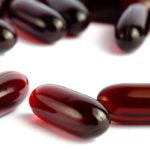Fitness Gloves: Your Guide to the Perfect Pair
Choosing the right pair of fitness gloves can significantly enhance your workout experience, providing comfort, protection, and improved grip. The market offers a vast selection, each with unique features catering to different needs and disciplines. This guide will help you navigate the choices, focusing on key considerations to find your perfect pair.
Understanding Your Needs: Fitness Discipline & Personal Preferences
Before diving into specifics, identify your primary fitness activities. Weightlifting requires different features than cycling or CrossFit. Weightlifting gloves prioritize wrist support and palm protection, often featuring padding and straps. Cycling gloves, conversely, emphasize breathability and dexterity for gripping handlebars. CrossFit gloves need to balance protection with flexibility, accommodating varied movements. Consider the intensity of your workouts; intense sessions necessitate more robust gloves than lighter training.
Personal preferences also play a crucial role. Some prefer a snug fit for optimal grip and control, while others prefer a looser fit for enhanced breathability and comfort. Consider your hand size and shape; poorly fitting gloves can cause discomfort and even injuries. Think about your sweat level; highly breathable materials are crucial for sweaty hands to avoid slippage and bacterial growth. Material preferences also matter: some prefer the feel of leather, while others opt for synthetic alternatives.
Key Features to Consider:
-
Material: The material significantly impacts durability, breathability, and grip. Genuine leather offers exceptional durability and grip, but it’s less breathable and requires more maintenance. Synthetic leather is a popular alternative, offering good durability and breathability at a lower price point. Neoprene provides excellent support and warmth, suitable for cold weather workouts. Nylon and other breathable fabrics are preferred for activities where breathability is paramount.
-
Padding: Padding is crucial for protecting your hands from calluses, blisters, and impact during weightlifting. Look for strategically placed padding on the palms and fingers. The thickness of padding should be carefully considered; excessive padding can hinder dexterity and grip. Gel padding provides superior shock absorption compared to foam padding.
-
Wrist Support: Weightlifting gloves often feature wrist straps that provide additional support and stability, reducing the risk of wrist injuries. The straps should be adjustable for a customized fit. Consider the level of support needed based on your weightlifting intensity and any pre-existing wrist conditions.
-
Grip: A secure grip is essential for all fitness activities. Look for gloves with textured palms or specialized grip materials for enhanced friction and control. Some gloves incorporate silicone or other materials to improve grip, especially when hands are sweaty.
-
Breathability: Breathability is crucial for maintaining hand comfort and preventing excessive sweating. Gloves made from breathable materials like mesh or perforated leather will allow for better airflow, keeping your hands cool and dry.
-
Finger Coverage: Full-finger gloves offer maximum protection, while half-finger or fingerless gloves provide better dexterity and breathability. Consider the level of protection needed for your specific activity. Half-finger gloves are popular for weightlifting, offering protection for the palm while maintaining dexterity in the fingers.
-
Closure System: Various closure systems are available, including hook-and-loop straps, elastic cuffs, and slip-on designs. Hook-and-loop straps offer the most adjustable fit and are ideal for weightlifting, while elastic cuffs provide a snug fit without the need for adjustment. Slip-on gloves are generally less supportive but more convenient.
Different Types of Fitness Gloves:
-
Weightlifting Gloves: These gloves prioritize wrist support and palm protection, featuring thick padding, adjustable straps, and durable materials. They are designed to reduce strain on the hands and wrists during heavy lifting.
-
Cycling Gloves: These gloves focus on grip and comfort while cycling, typically featuring padded palms and breathable materials. They offer protection against blisters and improve grip on the handlebars.
-
CrossFit Gloves: Designed for the versatility of CrossFit workouts, these gloves provide a balance of protection, grip, and flexibility. They may incorporate features from weightlifting and cycling gloves, adapting to various movements and exercises.
-
Gymnastics Gloves: These gloves provide grip and protection for gymnastic exercises, usually made from lightweight and breathable materials. They are often fingerless or half-finger for enhanced dexterity.
-
MMA Gloves: These gloves are specifically designed for mixed martial arts, offering protection and support for striking and grappling. They are heavily padded and often have a snug fit.
Care and Maintenance:
Proper care extends the life of your fitness gloves. Air them out after each use to prevent the build-up of moisture and bacteria. Spot clean as needed with a damp cloth and mild detergent. Avoid machine washing or tumble drying, as this can damage the materials and reduce the lifespan of the gloves. Leather gloves may require occasional conditioning to maintain their suppleness and prevent cracking.
Finding the Right Fit:
Before purchasing, carefully measure your hand size and compare it to the manufacturer’s sizing chart. Consider trying on different pairs to find the most comfortable and secure fit. Don’t hesitate to ask for assistance from staff at sporting goods stores. Reading customer reviews can provide valuable insights into the performance and durability of specific glove models.
Price Considerations:
Fitness gloves range in price from budget-friendly options to high-end models. The price is usually reflective of the materials, features, and construction quality. While it’s tempting to opt for the cheapest option, investing in a higher-quality pair often pays off in terms of comfort, durability, and longevity. Consider your budget and weigh it against the features that are most important to you.





